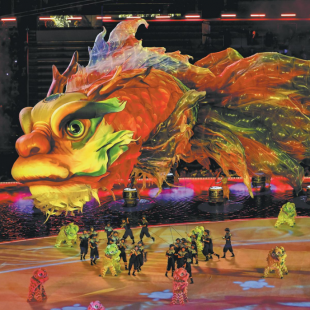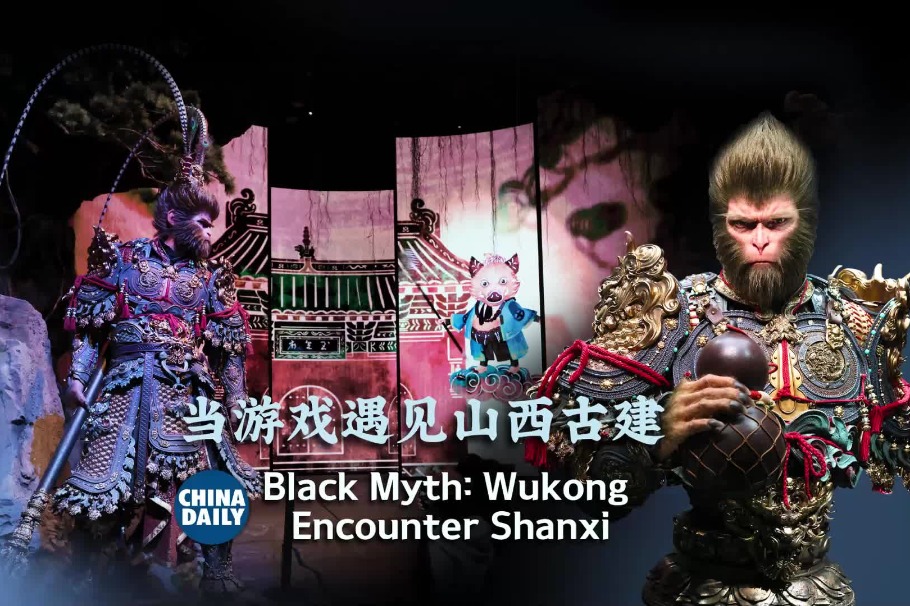Lantern of legend takes flight
A mythical dragon-fish reborn as a glowing airborne masterpiece is a dazzling highlight of China's National Games, report Xing Wen in Zhuhai and Li Wenfang in Guangzhou.


Moving to the rhythm of gongs and drums during festive occasions, they pray for good fortune, favorable weather, academic success and thriving communities.
The dance's origin is linked to a local legend.
According to the tale, a scholar once traveled to the capital for imperial examinations but was harassed by a group of succubi on the way.
Fleeing to the seaside, he saw two Aoyu, a male and a female, playing in the waves and cried out for help.
The Aoyu couple carried him across the sea to safety and later, the scholar topped the examinations.
When he met the emperor, he stood on the carved Aoyu head ornament at the imperial palace steps — giving rise to the idiom "Du Zhan Ao Tou" (loosely translated as standing alone above the Aoyu's head), meaning to be the best in one's field.
The scholar eventually ascended to immortality as the God of Literature. He returned to the sea where he first met the two Aoyu, and bestowed honors on them, turning them into immortals as well.
"This is a story about success, gratitude and benevolence," Zhong says.
He adds that as a cultural symbol, Aoyu reflects the aspirations of people in the coastal areas of Guangdong province.
Featuring the Aoyu image in the Games' opening ceremony, in his view, expresses wishes for a smooth event, the safety and health of athletes, and the people's hopes for a better life.
Zhong, who has long studied ancient Chinese literature and classical documents, says that the image of the giant Aoyu has been a recurrent motif in Chinese literature from ancient times to the present.
"In Liezi (a Taoist text from around 375 BC), there is a description of an 'Aoyu Fisherman' who could catch six giant Aoyu at once," he cites.
Later, the phrase "Diao Ao" (fishing for Aoyu) came to describe bold actions or lofty aspirations. The famous poet Li Bai, who lived 1,300 years ago, also used this allusion in his works, he adds.
"Aoyu embodies the romanticism and heroic spirit of Chinese culture," he says.
"The appearance of the giant Aoyu lantern at the Games gives this ancient image new visual vitality, demonstrating the creative transformation of Chinese culture in the new era."
Contact the writer at xingwen@chinadaily.com.cn





































